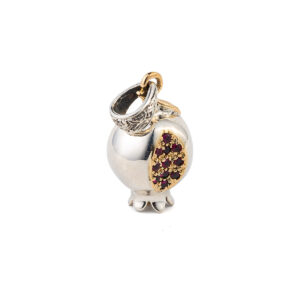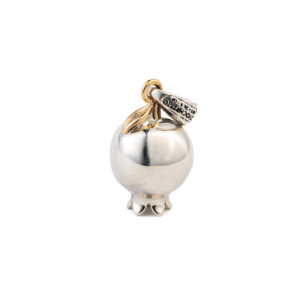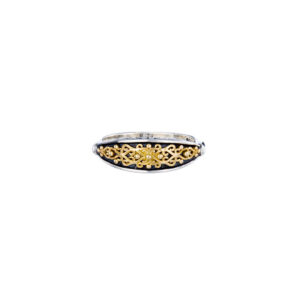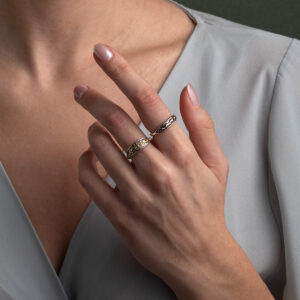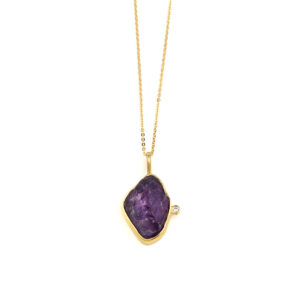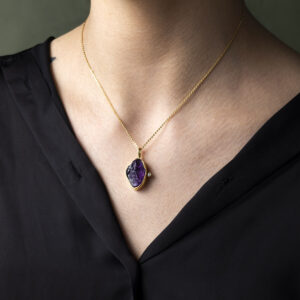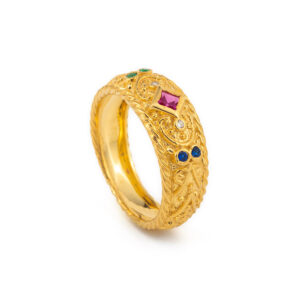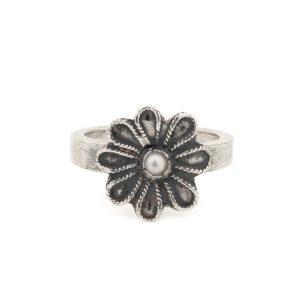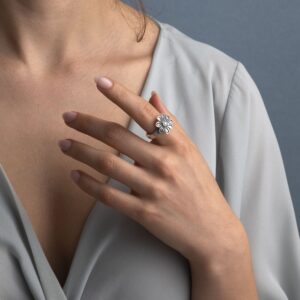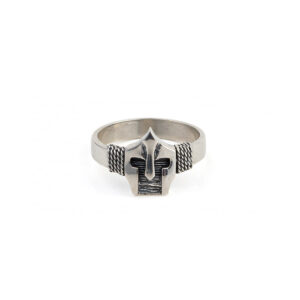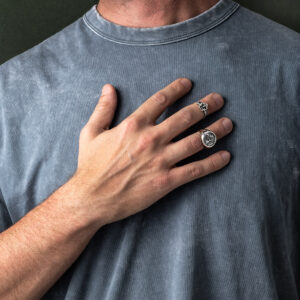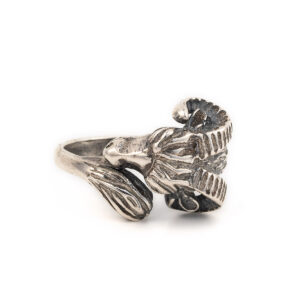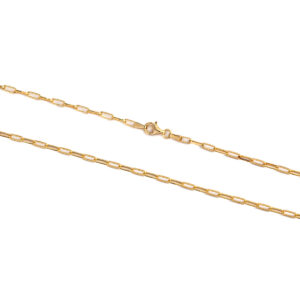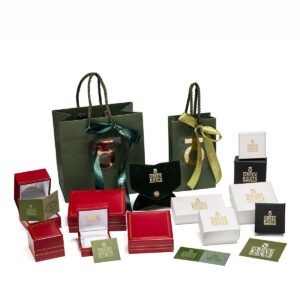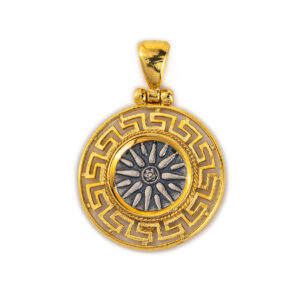Pomegranate Pendant in 18K Gold and Sterling Silver with Rubies
690,00€Pendant in 18K solid Yellow Gold and sterling silver with rubies.
Handcrafted jewelry made in Greece.
Women’s Collection by Gerochristo
Gerochristo – Aretousa Ring in 18K Gold and Sterling Silver
263,00€Ring in 18K Gold and Sterling silver.
Handcrafted jewelry made in Greece.
Aretousa Collection by Gerochristo
925 Sterling Silver and Gold Plated Amethyst Necklace
Made of 925⁰ sterling silver and gold plated.
Handmade in geece
As in all handmade items there may be small differences in weight and dimensions and this is what makes them unique and precious.
Explore Ionian Colors Collection
Sterling Silver Gold Plated Byzantine Ring with Swarovski crystals
Byzantine ring in Gold Plated with Swarovski crystals, handmade with great attention to detail. The decoration of this ring shows the influence of the Byzantine art.
Made of 925⁰ sterling silver and gold plated.
Vintage Flower Ring – Oxidized Silver & Pearl
Byzantine ring with the shape of a flower rosette.
Handmade with great attention to detail. Inspired by Byzantine art.
Made in 925⁰ sterling silver and gold plated.
Handmade item.
Rosette flower
The rosette (rose) is a timeless jewel, symbol, and amulet. The origin of the term is the Greek word for rose – rodon (ρόδον). Its use began in the Mycenaean era and continues as far as the 2nd millennium BC. The Mycenaean Rosette is a motif that was widespread throughout Mesopotamia, Egypt, Greece, and other ancient civilizations. It is inspired by a Mycenaean rosette bead, found at Mycenae, dated to 1400-1300 B.C. The rosette was used extensively in ancient Greek Mycenaean jewels, in architecture, pottery, and sculptures from 1500 BC. Mycenaean rosettes usually had 6 or 8 or 12 leaves, and sixteen leaves during the Macedonian Dynasty. Such details as the rodax shape and the number of leaves tend to vary with the era or beliefs. The rosettes were used to decorate the clothes, belts, and wreaths of the Kings. The number of leaves had a symbolic character each time. The four elements of nature (wind, earth, fire, water), the seven wonders of the ancient world or the twelve gods of ancient Greeks, and the world domination and radiance of the Kings of Macedonia. They were signs of beauty, purity, eugenics, worship, and power. Rosette or Rodax was probably the most popular and favorite decorative element in Mycenaean era, classical antiquity and Byzantine times.
Spartan Helmet Ring – Sterling Silver 925
This ring represents the helmet of Leonidas.
Made of sterling silver 925°.
Handmade in Greece.
Explore Heritage Collection
Leonidas was a warrior king of the Greek city-state of Sparta. Arguably, one of the greatest heroes in the history of ancient Greece.
In 480 B.C Leonidas led an army of 6,000 to 7,000 Greeks from many city-states, including 300 Spartans, fought the invading Persian army at the pass of Thermopylae. Leonidas of Sparta blocked the only road through which the massive army of Xerxes could pass. The Persians succeeded in defeating the Greeks but sustained heavy losses. A local resident named Ephialtes led the Persian general by a mountain track to the rear of the Greeks. King Leonidas sent away all the Greek troops and stayed behind with 300 Spartans, 400 Thebans, and 700 Thespian volunteers who refused to leave. They were all killed in the battlefield, protecting their homeland.
Rams Head – Sterling Silver Ring
This beautiful handmade ring features a Rams Head design inspired by actual ancient Greek history. In ancient Greek mythology, the ram was symbol of virility and fertility, power and leadership. The ram’s head also symbolizes Aries the first sign of the zodiac.
Made in 925⁰ sterling silver.
Handmade item.
Paperclip Chain Sterling Silver and Gold Plated 50 cm
Vergina Sun Pendant – Sterling silver gold plated
A beautiful pendant inspired by the ancient Vergina sun symbol.
The perimeter is decorated with meander or the Greek key design.
Made of 925 sterling silver and gold plated.
Handmade in Greece.
History
The Vergina Sun also known as the “Star of Vergina”, “Macedonian Star” is a rayed solar symbol appearing in ancient Greek art. The Vergina Sun proper has sixteen triangular rays. The name “Vergina Sun” became widely used after the archaeological excavations in and around the small town of Vergina, in northern Greece, during the late 1970s. In older references, the name “Argead Star” or “Star of the Argeadai” is used for the Sun as the royal symbol of the dynasty of Macedon. There it was depicted on a golden larnax found in a 4th-century BC royal tomb belonging to either Philip II or Philip III of Macedon, the father and half-brother of Alexander the Great, respectively.
